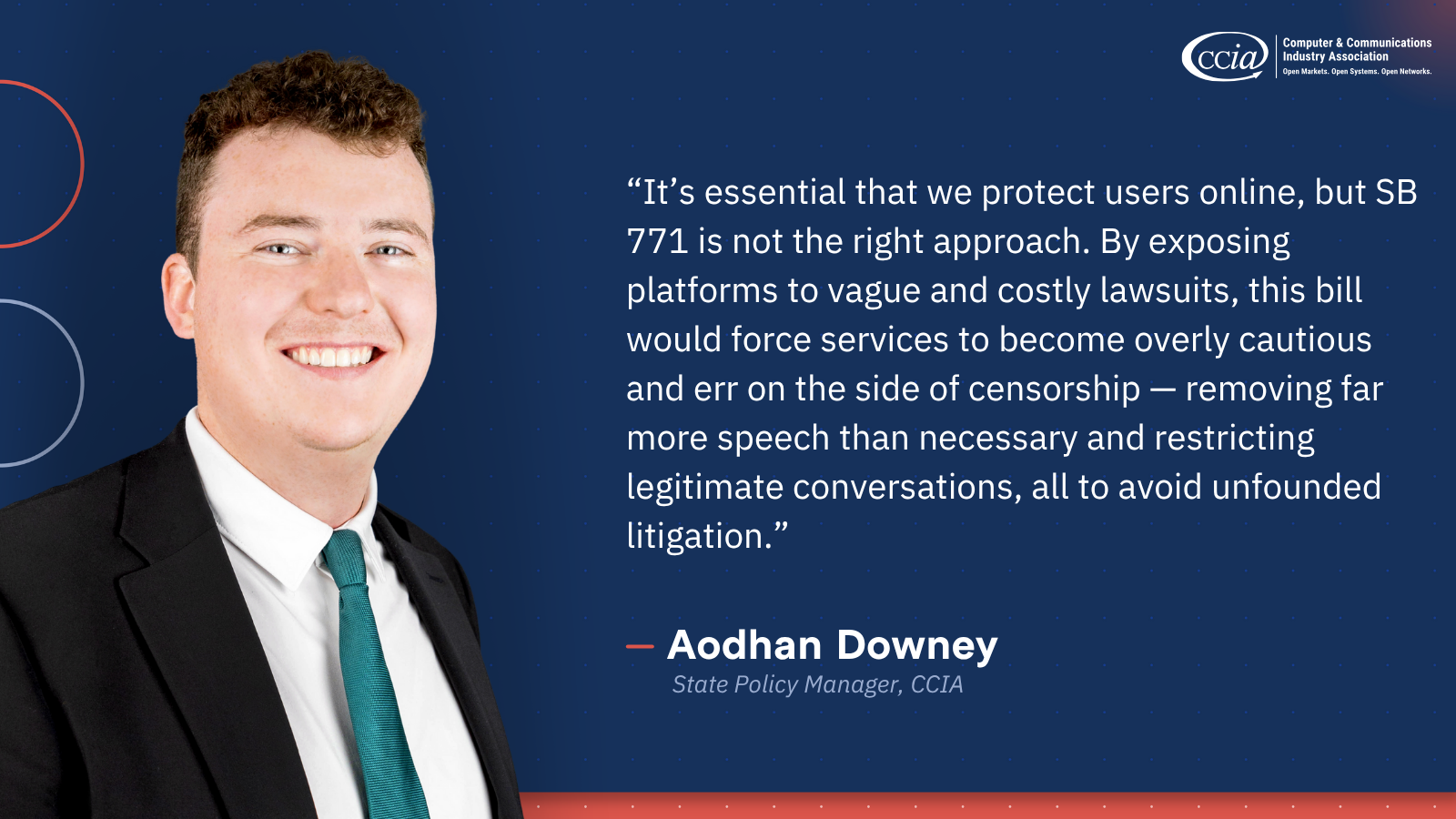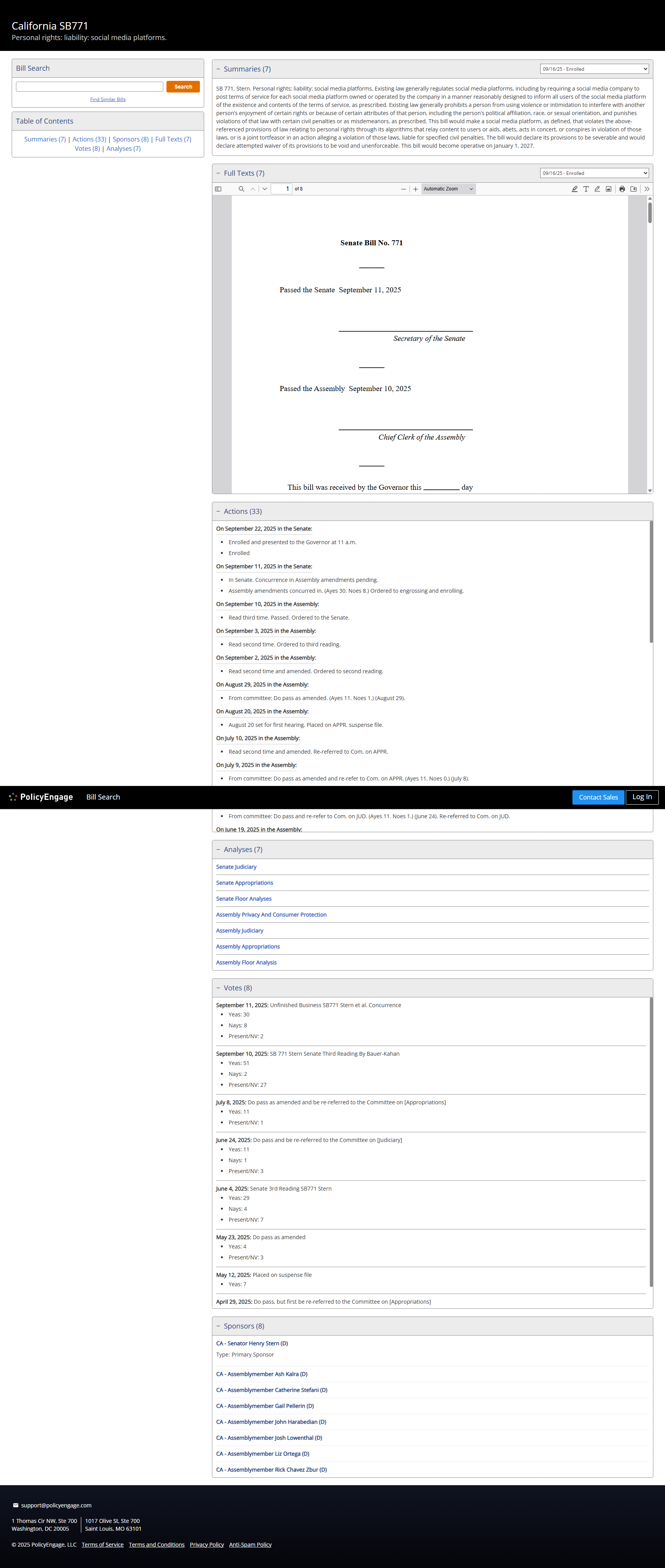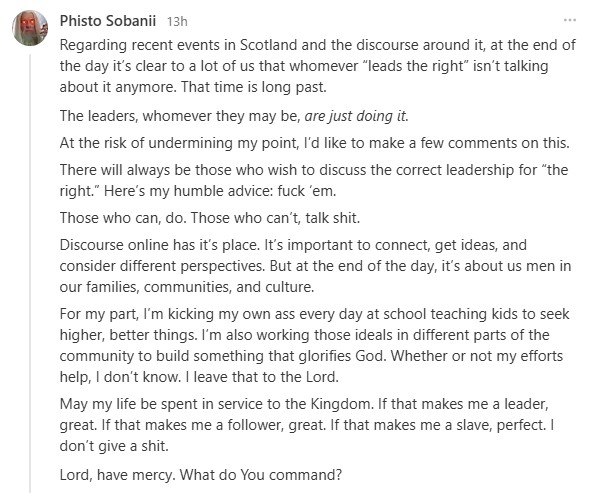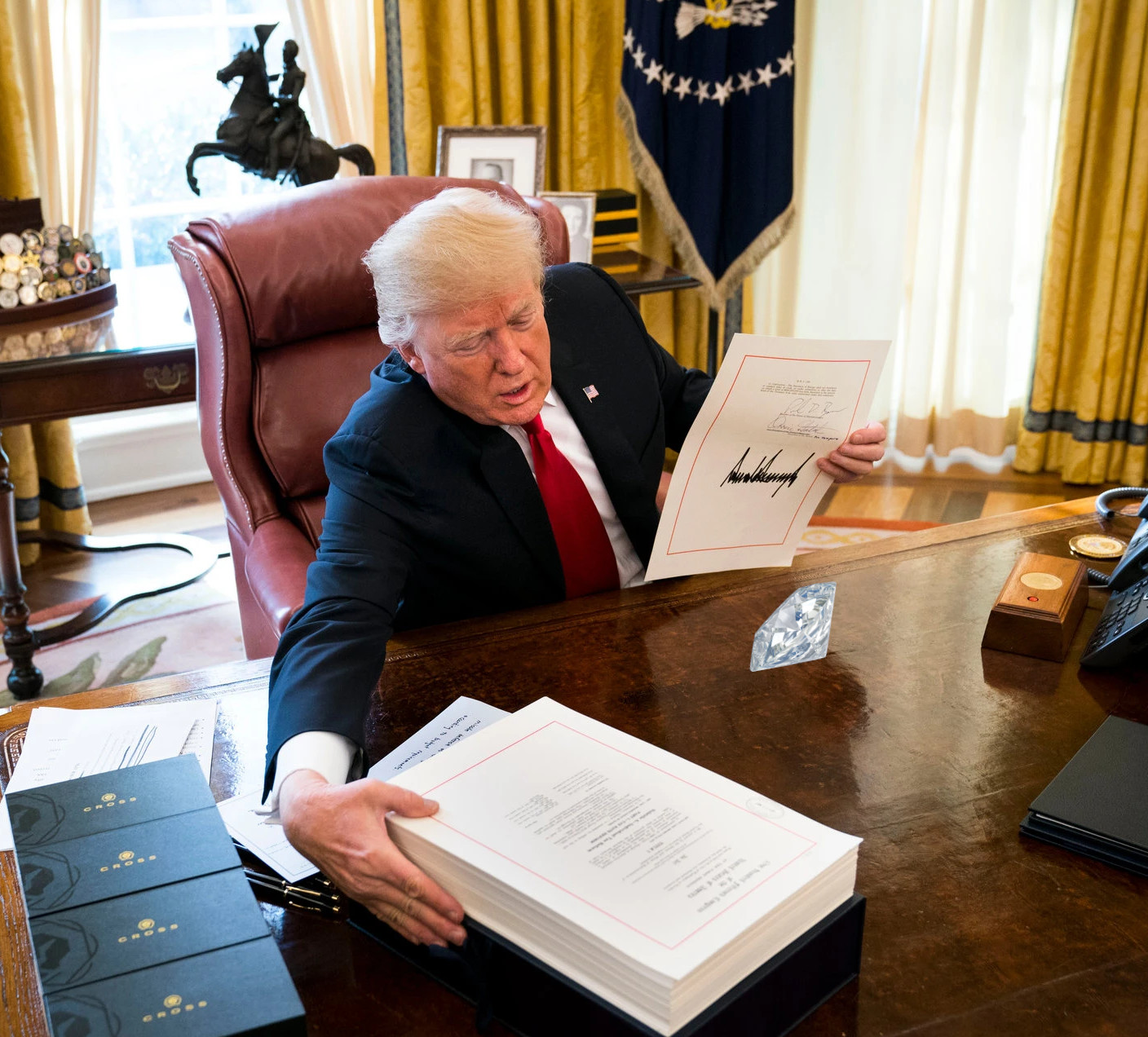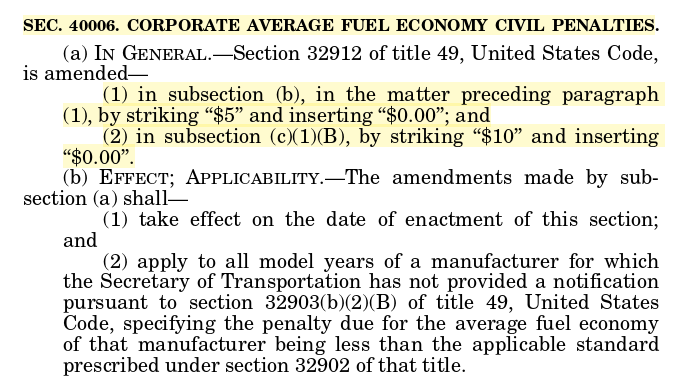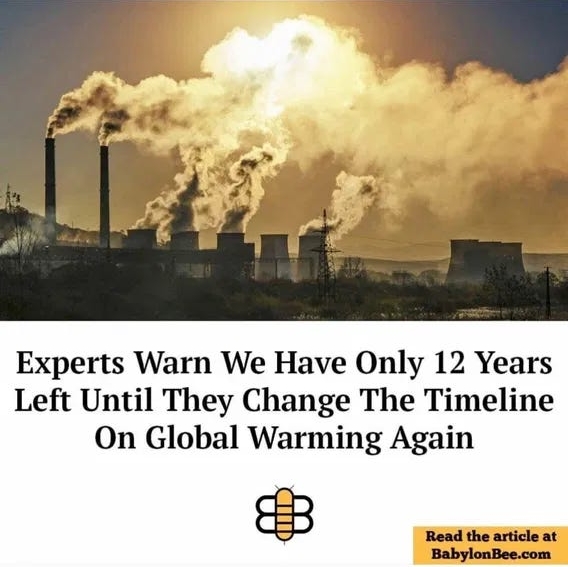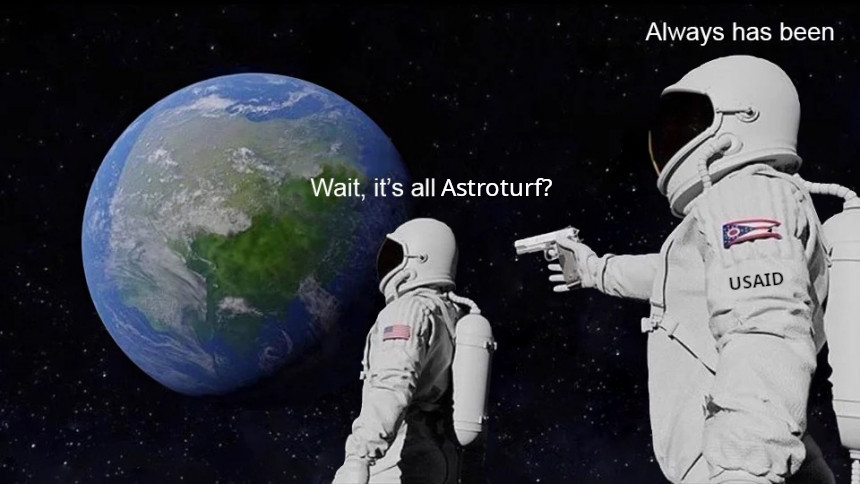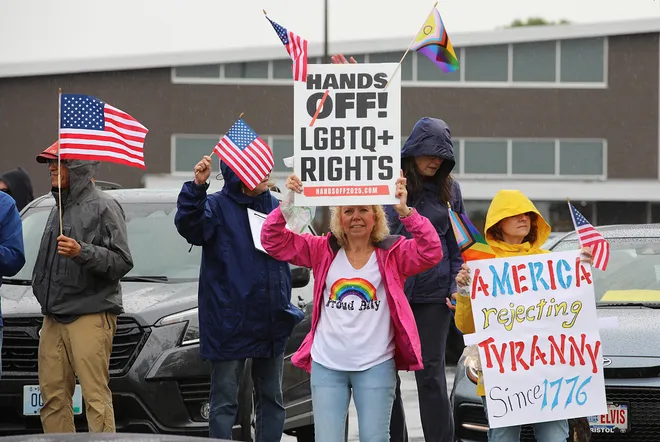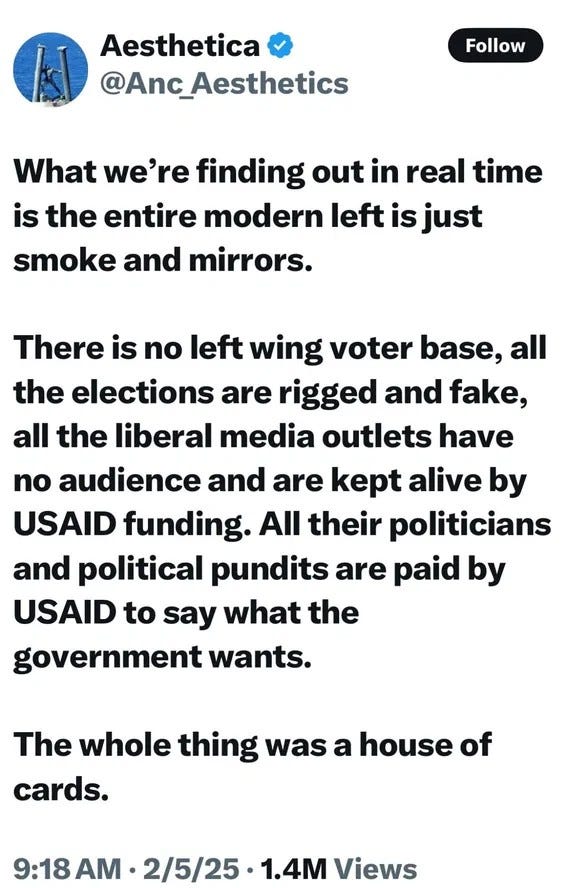Free Speech--California Ain't Got Time for That!
The government of California has officially crossed the Rubicon here. It is enough for legislators to signal that they want to block people from saying things which they, the state, disagrees with, but it's another thing when they adopt legislation that is designed to enforce that idea.
I don't need to get into the importance of "free speech" and why it's a good thing. We all understand this. But I'll briefly get into it anyway! The only reason to stop citizens from questioning their government--is the same reason that governments want to disarm the citizens--because the government plans on doing something horrible to the citizens, and they want to minimalize any pushback.
Likewise, when it comes to online speech--there is no reason to enact laws to limit it. There are already laws by which individuals can be held accountable for defamation, or slander; however, those laws don't protect politicians from being criticized. They also don't extend to people posting content that is accurate (something that someone said, or was documented to have said).
In comes California SB 771
There are many groups speaking out about this legislation.
This is a serious problem, and we all see where this can lead.
The Computer & Communications Industries Association is worried about this legislation.
"It’s essential that we protect users online, but SB 771 is not the right approach. By exposing platforms to vague and costly lawsuits, this bill would force services to become overly cautious and err on the side of censorship — removing far more speech than necessary and restricting legitimate conversations, all to avoid unfounded litigation. This risks undermining free expression, conflicts with federal law, and ultimately would make the online environment less open and less trustworthy. We urge the Assembly to reject this flawed measure and pursue balanced, effective solutions that will truly protect users while upholding constitutional rights and an open internet.”
The American-Arab Anti-Discrimination Committee (ADC) is also worried about the legislation.
Framed as a civil rights safeguard, SB 771 could enable politically motivated claims that conflate criticism of Zionism with antisemitism — a trend already visible in Meta’s content moderation policies, where “Zionist” is treated as interchangeable with “Jewish,” and in the push for platforms to adopt the controversial international Holocaust Remembrance Alliance (IHRA) definition of antisemitism. This definition has been widely criticized by hundreds of scholars and numerous Jewish organizations (including JVP and Jews for Racial and Economic Justice) for erasing the line between political critique and bigotry, raising serious concerns that SB771 could be used to suppress protected speech about apartheid, occupation, and settler colonialism in Palestine.
ADC condemns all forms of hate and stands firmly against discrimination in every form. SB 771 weaponizes civil liability to force platforms to remove content that challenges dominant narratives, particularly those relating to Israel and Palestine. By encouraging platforms to over-police content to avoid costly lawsuits, SB 771 can trigger a de facto “delete policy” — especially for Palestinian voices and those in solidarity with them.
As you can see, there's a wide ranging difference of opinion here--but they all agree that SB 771 is a bad idea.
Freedom of Speech at It's Core
You can't rally a cause, or a movement without free speech--that's a fact--this is indisputable.
Language connects us all (more than it divides us) and limiting the free and open sharing of information, by language or speech restrictions is against "collective humanity" as a whole--regardless of what religion you subscribe to.
Having a national language falls outside of these bounds, as it's not a limitation, a national language is required for proper legal and judicial review. Words mean things, and laws have to be based on those words, not "feels," not "potential interpretations," but what those words actually relate to in the physical world.
So, Where is This Legislation Now?
This legislation is likely to pass.
Prepare yourself if you live in California--you're about to be effectively removed from the political process--act accordingly.
If you enjoy my writing, you could buy me a Ko-Fi 😉👉
Please leave a comment, like it or hate it... You DO NOT need to register to leave a comment. Email addresses are NOT used. Just make one up "someone@somehost.com"
We're Entering Uncharted Territory (what happened to these people)
I wrote this the other day on Substack:
This is an odd subject, because I don’t think we’ve ever been here before as a society.
Generally, people from Western nations tend to honor the dead.
That is to say, human life has intrinsic value and worth. Those who relied upon, or where emotionally connected to the person who died—they have worth as well—this current crop of people on the left doesn’t see things this way.
Their worldview doesn’t work within the realm of how people generally operate. These individuals literally have no legacy. Who will grieve them when they die? Their kids are taught (by them) that they shouldn’t respect those who just died—because of a difference in opinion.
Moreover, who doesn’t want to be grieved when they die? Who doesn’t value life—when every living thing on the planet fights to stay alive? How can someone become so inverted?
This is not normal human behavior. We’re all selfish, if we’re honest. It’s part of what keeps us alive when outside circumstances might dictate otherwise—it’s part of being human.
But these people on the left are subject to a cause that promises them nothing. Literally nothing. They’re subjecting themselves to the worst kind of slavery. Their minds have been captured. They are by literal definition slaves.
These people who are celebrating Charlie Kirk’s death are looking at life like it’s 3rd person (and I don’t mean by using pronouns). It’s as if they believe they can walk away after all this, and there is somewhere else that their mind truly resides (they’re separated from reality).
But there’s nowhere to go—at least not in the sense that those still living can interact with.
So what does this tell us?
It tells me (at least) that there are a whole lot of people who are “not all there” and are willing to commit to horrible acts—just because they are directed to do so. They are selfless—but selfless in service of something that will never benefit them—or their offspring.
This creates quite the dilemma.
“If you know the enemy and know yourself, you need not fear the result of a hundred battles. If you know yourself but not the enemy, for every victory gained you will also suffer a defeat. If you know neither the enemy nor yourself, you will succumb in every battle.” ― Sun Tzu, The Art of War
This enemy is new, in that they don’t really understand reality—and don’t even act within the confines of their own best interest.
This is like humans vs ants (and I mean that metaphorically, not literally) most of us, can’t imagine a world in which any people champion a cause that makes things worse (for them and for everyone else).
This leftist mindset just serves to create more of the angst and hopelessness that came before it.
Where do we go from here?
I have no idea, but I know that a lot of people are going to either wake up, or live miserable lives, because the clock is ticking—none of these people are getting any younger.
Time comes for us all. It’s what we do while we’re here that matters.
There people who are worried that those on the right are "canceling" people who endorsed the assassination of Charlie Kirk, but that argument ignores the core difference of what's happening here.
The left canceled people for telling the truth, things like, "Men can't have babies" and "There are physical differences between men and women." Basic biology was enough to get someone canceled by the left.
The people endorsing political assassinations are in no way on the same level as those stating biological facts.
These people aren’t just sharing “mean jokes” with their friends.
They are broadcasting their endorsement of assassination(s) on social media—many in video format—not in their DMs.
These people are being intentionally performative about it.
There is no "cancelling." The people publicly celebrating Charlie Kirk’s death are bringing this upon themselves—through their deliberate and performative actions. They're effectively doxxing themselves.
The question is, “Why?” Who seeks the company of those who wish literal death upon those they disagree with?
What do you think?
If you enjoy my writing, you could buy me a Ko-Fi 😉👉
Please leave a comment, like it or hate it... You DO NOT need to register to leave a comment. Email addresses are NOT used. Just make one up "someone@somehost.com"
Where Are Our Leaders? (Quick thoughts on the subject)
I was thinking about this today (08/27/25) because of something Phisto Sobanii wrote on Substack.
This got me thinking.
Do we need "leaders?" Why is everyone waiting on said leaders? I think that might be part of what's missing in all this--not the leaders themselves--but the idea that leaders are needed to effect change.
There is often no “ruler” on the right. The true right (not what leftists call "right," which is actually tyrannical).
Those on the right tend to be free-thinking people, who are less likely to rally around a “ruler.” This is why the right is not rallied in the same way that those on the left are. Those on the right tend to be problem solvers.
This is also why those on the left (at least the followers, not those at the top) actually think that Trump is a dictator. They don’t understand the Constitution, and how it’s meant to be applied. If they did they would never have supported leftist leaders in the first place, as leftist leaders are always trying to circumvent the Constitution.
Those on the left would argue that Trump is a ruler/dictator. But most of the people I’ve run into like what Trump is doing—not particularly his “leadership,” not what he’s telling other people to do (because, for the most part he’s not). No, most people like results.
Once people see those results, then they start to rally behind someone.
There are plenty of people online that don’t bring results. That’s not to say that they don’t have good ideas. And good ideas can spread. Good ideas are needed. Good ideas bring people hope. Good ideas can inspire people to take action.
The best news I’ve seen is that younger people are trending more to the right. Because they are acting on what they’ve seen or experienced—not what they are told.
It’s the generations before them that are looking for nostalgia, and still believe that there are those in Washington who are looking out for their best interest. There are not. However, there might be those in Washington whose current goals align with some of ours. And we should take advantage of that situation.
Up to, and until, enough people start doing what’s necessary (within their own lives) to turn things around, we’ll continue to slide further and further to the left.
There are no true “leaders” on the right. There are however, those who inspire others, and that’s what we need to keep things headed in the right direction.
The American Revolution was not fought by “leaders”—it was fought by those who were inspired by leaders.
What do you think?
If you enjoy my writing, you could buy me a Ko-Fi 😉👉
Please leave a comment, like it or hate it... You DO NOT need to register to leave a comment. Email addresses are NOT used. Just make one up "someone@somehost.com"
CAFE Standards, Cash for Clunkers, and How to Destroy The Used Car Market
There was a hidden gem in the OBBBA (One Big Beautiful Bill Act).
I admit, I wasn't holding out much hope in the OBBBA aside from making the Trump Tax Cuts permanent, but there's one more thing that hits home for me.
The removal of fines related to federal CAFE (Corporate Average Fuel Economy) standards. CAFE standards were an albatross around the next of automobile industry since 1978 (when the rules went into effect).
The CAFE standard rules are still there, but there are no fines imposed for violating those rules. It's basically the same thing they did for the Obamacare insurance mandate. It's still there, but there are no taxes/fines if you violate it.
For 50 years, the federal government has been forcing fuel economy standards on auto companies. If the average fuel economy of the cars sold in a year exceeded a federal standard, the companies had to cough up enormous penalties.
Passed in 1975 as a way to deal with an energy crisis (that was caused by government price controls), “corporate average fuel economy” (CAFE) standards – required the fleet of cars sold by an automaker to achieve an arbitrary miles-per-gallon goal. If they missed the goal, they paid hefty annual fines.
From the beginning, these standards were a disaster, forcing automakers to radically downsize their fleet, which research showed cost thousands of lives because, all things being equal, smaller, lighter cars are less safe than larger ones.
In fact, a 2002 National Academy of Sciences found that these fuel economy standards not only boosted the cost of cars, but may have caused as many as 2,600 more traffic fatalities just in 1993.
The standards, which were ratcheted up year after year, also wildly distorted the car market. To meet them, automakers had to sell more small cars than consumers wanted to buy, which meant heavily discounting them, and then making the cost up by jacking up prices on the bigger cars most buyers wanted or needed. Carmakers routinely paid extravagant fines for failing to meet the standards. Last year, Chrysler had to write a check to Uncle Sam for more than $190 million.
Chrysler didn't have to pay more than $190 million in fines -- their customers did. But it wasn't just Chrysler -- it was pretty much every major car manufacturer in the world -- for a total of $105 billion in fines paid.
CAFE standards were never about increasing efficiency, that was the lie that was told to the public. Check this out from 2012.
The latest "corporate average fuel economy" (CAFE) standards will require the average fuel economy of all the cars an automaker sells to almost double to 54.5 miles per gallon by 2025.
Automakers largely back the new standard. Lots of fuel-saving technologies exist today, with more in the offing, they say. But the industry also admits the mandate will require significant change in the kind of cars automakers build and sell.
"Electric vehicles will play a huge role in getting there," Wade Newton of the Alliance of Automobile Manufacturers told IBD. That's because traditional gas-powered cars today come nowhere near that 2025 goal. And whether they ever will isn't clear.
Even the tiny Smart car gets just 36 miles a gallon. And no hybrid on the market today meets Obama's mileage goal. Plus the rules will require every car, large and small, to dramatically improve its fuel economy.
The Honda Fit would need to get 61 mpg by 2025, according to the National Highway Traffic Safety Administration. That's double what it gets today. How Honda can possibly close that gap is anyone's guess.
In contrast, the EPA gives electric cars huge "miles per gallon equivalent" ratings. The all-electric Nissan Leaf gets a 99 "mpge" rating, the Volt a 60.
How many people out there knew that their 2025 vehicle, whatever that might be, should get 54.5 MPG? Even the newest hybrids "meet the standard" in estimated MPG. But it's doubtful that they would live up to it in real-world scenarios. And the Honda Fit, no way it's going to 61 MPG with an ICE engine. But then, it was never supposed to, Americans were supposed to be forced into ever more expensive hybrid and EV options -- because of Climate Change. Never mind that we were supposed to reach the "critical warming point" -- for the last 40 years -- and it just keeps getting moved forward every 10 years or so.
The idea was to have the public think that CAFE standards were about making ICE (Internal Combustion Engines) more efficient -- but that was never the goal. The true goal was to have ICE engines effectively outlawed through legislation. Legislation that the vast majority of the public was unaware of.
The honest truth is that none of this has anything to do with the environment. If it did, real solutions would be championed -- but they're not -- only hair-brained schemes that result in money changing hands are offered as "solutions." A lot of that money is in the form of government subsidies (read tax dollars).
Isn't it funny how when the government subsidies are axed, the demand for eco-friendly products immediately goes down?
Remember the government program "Cash for Clunkers?" That's where the government ordered dealerships to destroy millions of fully functioning automobiles and effectively collapse the used car market.
I wrote about Cash for Clunkers (3) times in August of 2009, here, here and here.
Cash for Clunkers was a nightmare because it removed all of the cheap used cars from the market, cars that sell for cash. You know the kind, the ones that people just starting out might buy.
Government interference in the economy is like Rumpelstiltskin. There's always a price to pay for messing with the economy.
Sure, you might sell more new cars, but you'll sell them to people who can't really afford them. Stopping those people from advancing economically, and that's never a good thing.
Now that the $105 billion in additional cost which was added to the US car market has been alleviated, perhaps car prices will come down a bit.
What do you think?
If you enjoy my writing, you could buy me a Ko-Fi 😉👉
Please leave a comment, like it or hate it... You DO NOT need to register to leave a comment. Email addresses are NOT used. Just make one up "someone@somehost.com"
Money is Drying Up for Leftist Causes
For decades there have been large demonstration with thousands of people showing up to protest this or that. But were they truly "grass roots?"
Yuri Bezmenov in the famous interview with G. Edward Griffin, in 1984 said this:
"It's not grass roots. It's not what most people want. Most people are completely sick & tired by it.
"No political movement is grass roots. Every one is the product of a highly organized & well-funded group of political activists." - Yuri Alexandrovich
There have been many instances where crowds of people have been proven to be Astroturf. The one that always comes to mind with me involves Andrew Breitbart. Glen Beck was speaking at an event in Hoffman Estates 2010. There were protesters chanting usual nonsense like "Stop the Hate!"
When Breitbart went out to confront the protesters, things got very strange.
Isn't it interesting how the whole operation was funded. There were union signs -- with union printing on the back -- just for good measure.
Long story short, they were primarily Astroturf, frauds. People paid to be there -- not legitimately concerned citizens.
Thanks to DOGE and "DataRepublican (small r)" on X, we now know that USAID has funded many of these "grass roots" organizations through various NGOs to disguise the source of the funding. Here is a brilliant breakdown of how all of this money moves around through NGOs to make its way into the hands of leftist organization here in the US.
Grand Total: $1,952,938,001 in taxpayer funds!
➡ NATIONAL ENDOWMENT FOR DEMOCRACY (521344831) Taxpayer Funds ($362,047,237)
➡ INSTITUTE OF INTERNATIONAL EDUCATION (131624046) Taxpayer Funds ($257,092,498)
➡ NATIONAL DEMOCRATIC INSTITUTE FOR (521338892) Taxpayer Funds ($167,610,102)
➡ CONSORTIUM FOR ELECTIONS & (521943638) Taxpayer Funds ($165,142,739)
➡ GLOBAL COMMUNITIES (520846183) Taxpayer Funds ($155,240,485)
➡ PACT INC (132702768) Taxpayer Funds ($149,717,276)
➡ INTERNATIONAL REPUBLICAN INSTITUTE (521340267) Taxpayer Funds ($130,689,289)
➡ American Bar Association Fund for Justice and Education (366110299) Taxpayer Funds ($114,242,128)
➡ FREEDOM HOUSE (131656647) Taxpayer Funds ($93,979,673)
➡ INTERNEWS NETWORK (943027961) Taxpayer Funds ($93,974,716)
➡ INTERNATIONAL FOUNDATION FOR ELECTORAL (521527835) Taxpayer Funds ($58,684,285)
➡ CENTER FOR INTERNATIONAL (521398742) Taxpayer Funds ($49,782,402)
➡ ROCKEFELLER PHILANTHROPY ADVISORS INC (133615533) Taxpayer Funds ($27,306,551)
➡ EAST-WEST MANAGEMENT INSTITUTE INC (133586432) Taxpayer Funds ($25,060,024)
➡ THE CARTER CENTER INC (581454716) Taxpayer Funds ($22,531,458)
➡ SEARCH FOR COMMON GROUND (521257425) Taxpayer Funds ($20,758,888)
➡ THE RHODE ISLAND COMMUNITY FOUNDATION (222604963) Taxpayer Funds ($12,502,500)
➡ INTERNATIONAL CENTER FOR NOT-FOR-PROFIT (521818273) Taxpayer Funds ($10,638,679)
➡ INSTITUTE FOR WAR & PEACE REPORTING-US (431962561) Taxpayer Funds ($9,842,659)
➡ CIVICUS WORLD ALLIANCE FOR CITIZEN (521847010) Taxpayer Funds ($7,882,463)
➡ INTERNATIONAL CITYCOUNTY MANAGEMENT (362167755) Taxpayer Funds ($7,390,615)
➡ DELAWARE COMMUNITY FOUNDATION INC (222804785) Taxpayer Funds ($5,886,448)
➡ OUTRIGHT ACTION INTERNATIONAL CORP (943139952) Taxpayer Funds ($3,184,871)
➡ MOBILITY INTERNATIONAL USA (930783096) Taxpayer Funds ($1,411,393)
➡ Silicon Valley Community Foundation (205205488) Taxpayer Funds ($150,000)
➡ INTERNATIONAL WOMEN'S MEDIA FOUNDATION (521648942) Taxpayer Funds ($138,622)
➡ UNITED CHARITABLE (204286082) Taxpayer Funds ($50,000)
DataRepublican (small r) shows through charts and graphs where this money is funneled or laundered. There is a seemingly never ending list of "official sounding" NGOs to which money can be given in the form of government grants. Where the money goes after that becomes much harder to track.
But that's by design. NGOs are (Non-Government(al) Organizations) as a result of their non-government status, you can't file a FOIA (Freedom of Information Act) request to find out where the money is going.
Where does that bring us today? Well, over the weekend an event was held to show solidarity with Steven Colbert, the late-night TV show host that was fired by CBS.
A Big Apple rally in support of on-his-way-out “Late Show” host Stephen Colbert drew fewer than two dozen people Sunday — with even the NYPD cops on scene quickly calling it a day since most of the demonstrators left after just a few minutes.
Organizers said the “We’re With Colbert” gathering outside the CBS Broadcast Center on Manhattan’s West Side said it was meant to be part of a nationwide call for “integrity.”
...
CBS said declining viewership and diminishing profits led to its decision to end the show in May 2026, effectively firing the 61-year-old talk-show host Colbert — but critics claim the network bowed to pressure from Trump.
The left has been up in arms over the firing of Steven Colbert with some even claiming that Trump was behind it.
But that's not the case. The show was losing money, and the sad protest -- without being propped up and funded -- is the perfect illustration of why Colbert was let go.
Of course, this is one example of a protest or coming together event that slumped, but it's not the only one.
How many people showed up for the No Kings Protests?
The American Civil Liberties Union, part of the coalition that organized the demonstrations, said in its statement that more than 5 million people participated in over 2,100 rallies and protests nationwide.
Political organizing group Move On, a partner in the "No Kings" rallies, also shared the five million-person estimate in a fundraising email.
Jeremy Pressman, the co-director of the Crowd Counting Consortium — a Harvard University and University of Connecticut project that estimates political crowds — told USA TODAY on June 15 that it will take "some time" to complete an estimate on the "No Kings" rallies.
5 million people in 2,100 locations would average at 2,381 people per event. In reality some cities would have more, others would have less. 5 million people is a "guesstimate" by the organization that spearheaded the protest. They wouldn't overestimate now would they? Remember the Biden rallies?
However, let's consider their numbers at face value. In the 2024 presidential election there were roughly 157 million votes cast. Trump won 77,284,118 and Harris won 74,999,166. Only around 6.7% percent of Harris voters turned out for the No Kings Protests? Keep in mind, that's not counting for the people who didn't vote at all, and still went to the protests.
5 million sounds like a lot, but considering all the people who were supposedly backing Harris, that's not very many people.
The pictures from the No Kings Protests are what got me. Most of the No Kings protesters look like they're protesting by day, and rubbing rabbit's feet at Bingo by night. There were older people at these protests than in the past. It looked like a bunch of old hippies getting together for one last "Fight Back Against The Man" outing.
I believe we're seeing the effects of the USAID money drying up. Not only with the No Kings Protests, but also with the Steven Colbert event. What's becoming abundantly clear is that there was never a large left-wing groundswell. It was manufactured, and it took billions of dollars to keep the illusion afloat.
After all, it's not easy to convince people to take up sides with those who are openly working against their own interests -- which leftists are nearly always doing.
What will happen to all those involved in the tax-payer money laundering operation? Nothing, they just move along to the next grafting operation. Keep in mind, this was all legal, just unethical. These mechanisms were put in place over decades by people who are retired, dead, or otherwise unable to be held accountable because of the statute of limitation for such things.
Now that these efforts are being exposed and shutdown, perhaps a much more accurate visualization of the American population will become visible.
It's going to be very hard for those on the left to explain away why "grass roots" protests, more or less disappeared, when government grant money dried up.
What do you think?
If you enjoy my writing, you could buy me a Ko-Fi 😉👉
Please leave a comment, like it or hate it... You DO NOT need to register to leave a comment. Email addresses are NOT used. Just make one up "someone@somehost.com"

